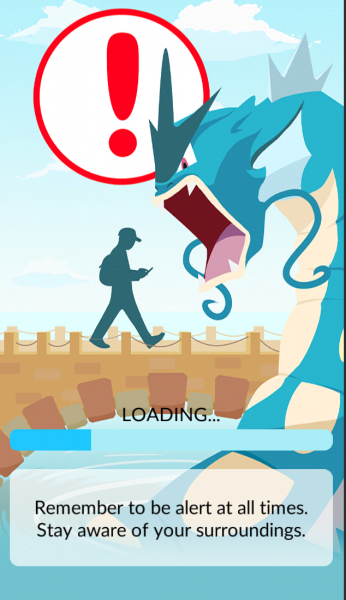Pokémon GO: What Do Librarians Need To Know?
 If you’ve been anywhere near the Internet in the last week, you’ve probably heard of Niantic’s new game, Pokémon GO. Even by viral video game standards, its popularity has been impressive. According to SimilarWeb, within two days of its U.S. release, the game was installed on 5.16 percent of the country’s Android devices. This doesn’t even take into account iOS users, with whom the game has also been popular. Perhaps even more striking, the Wall Street Journal estimates that it has already added $9 billion to Nintendo’s market value.
If you’ve been anywhere near the Internet in the last week, you’ve probably heard of Niantic’s new game, Pokémon GO. Even by viral video game standards, its popularity has been impressive. According to SimilarWeb, within two days of its U.S. release, the game was installed on 5.16 percent of the country’s Android devices. This doesn’t even take into account iOS users, with whom the game has also been popular. Perhaps even more striking, the Wall Street Journal estimates that it has already added $9 billion to Nintendo’s market value.
“Gotta Catch ‘Em All”
Clearly this game has struck a chord with players, but how does it work? The game sends people around to public locations in search of virtual treasure. Based on the 1990’s Pokémon video games and built using technology similar to a game called Ingress, Pokémon GO uses virtual reality technology along with a mobile device’s GPS and camera to bring Pokémon to the player’s real-world surroundings. Players can find “wild Pokémon” on an in-app map. As they approach the designated location, their device will buzz. At this point, the Pokémon character appears superimposed on a real-time image of the location; players can catch it by throwing a Poké Ball. Though this may sound easy, the difficulty varies by Pokémon to keep players engaged. Once a Pokémon is captured, it is added to the player’s Pokédex.
Though collecting (and training) Pokémon is the central element of the game, players must also find designated Poké Stops—existing geographic spots—to collect more Poké Balls and other special elements. Once they reach Level 5, they can join one of three teams and battle other players at locations called Poké Gyms. Currently, locations have little control over whether they have been designated Poké Stops or Gyms. However, if your library is at or near a Poké Stop, you can place a “lure” to attract additional Pokémon for 30 minutes at a time. Though items, including lures, can be purchased in the app, all of the functionality can be accessed by dedicated players for free. Additional details and tips are available on the Pokémon GO support page and Glossary.
Privacy and safety concerns

Pokémon GO has clearly managed to capture the imaginations of a wide audience, but it is not without serious issues. Beyond the general dangers of distracting players as they wander around the real world, players may occasionally be led to private property or even dangerous locations. The official Pokémon GO website has several warnings that players should pay attention to their surroundings and respect private property. But some worrying stories have already emerged, including one about robbers who used the game to lure victims.
In addition, as of June 11, players were required to give Pokémon GO access to all of their Google account data in order to login, potentially including email, documents, browsing history, and other data. While the company has stated this was an error they are working to correct, and that they have not actually collected any information beyond basic login information, it is a clear example of the importance of understanding the terms of all digital activities and being aware of the data companies are collecting. As much as libraries can be a part of the fun of the game, they can also have an important role in explaining these issues to patrons and helping them to make informed and safe decisions as they play.
How are libraries getting involved?
Though Pokémon GO is still new, libraries are already joining in the fun and connecting with enthusiastic patrons. The New York Public Library was quick to blog about the game, offering an introduction to game play and some tips about finding relevant locations in and around the library. At the Thomas J. Harrison Pryor Public Library in Pryor, OK, the staff has used social media to advertise the library’s Poké Stop and has started dropping lures to attract players. The library also has plans to use the enthusiasm for the game to promote its Pokémon-related collections. As librarian Marie Reist notes, “I rather expect that in a few weeks, the novelty will have worn off, but if you can get in on a cultural phenomenon at the right time, it really boosts a library’s street cred, as it were. And it’s just provided a fun way to relate to some of our patrons.”

A recent Facebook post from the Thomas J. Harrison Pryor Public Library in Oklahoma.
Other libraries are designing programs around the game. The Skokie Public Library in Skokie, IL, happens to be a Poké Gym and has already scheduled Pokémon GO Safaris for K–5 patrons. At these hour-long programs, two staff members will take kids (and the caregiversof kids K–2) to local Poké Stops where they can collect items and learn about neighborhood landmarks. The program will end at the library’s Poké Gym, where kids can battle one another. A key component of each session will be an introduction covering physical safety and rules as well as digital safety. This may not be what attracts participants, but it does allow the library to achieve educational goals in line with its overall programming strategy. As Amy Koester, Youth & Family Program Supervisor at the library, notes, “We see these programs as a vital opportunity to talk about digital and physical safety, privacy, and being conscientious users of technology….this type of program is a prime example of how libraries can serve as media mentors in the lives of kids and their families. We can use our expertise–in evaluating resources and offering developmentally appropriate programs–to model positive, impactful, and digitally literate ways to engage with technology in the course of everyday life.”
Though it remains to be seen whether Pokémon GO will be a brief fad or a long-term obsession, the game’s popularity has already helped to demonstrate how emerging tech creates opportunities for libraries to connect with and educate patrons in unexpected ways.
 Carli Spina is an academic librarian in Boston, MA and serves on the Advisory Board for YALSA’s The Hub blog. She can be found on Twitter: @CarliSpina.
Carli Spina is an academic librarian in Boston, MA and serves on the Advisory Board for YALSA’s The Hub blog. She can be found on Twitter: @CarliSpina.
RELATED
ALREADY A SUBSCRIBER? LOG IN
We are currently offering this content for free. Sign up now to activate your personal profile, where you can save articles for future viewing









Add Comment :-
Comment Policy:
Comment should not be empty !!!